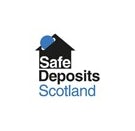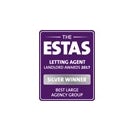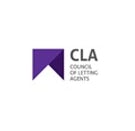Some of you, hopefully most of you if your landlords, will be aware of the changes in regulation regarding Legionnaires Disease in private rented accommodation.
However, in light of some conversations I have had recently with landlords it’s apparent to me that there is some confusion and indeed anger surrounding this, so I will endeavour to explain.
Firstly let me make my position very clear, I think that it’s a particularly pointless requirement given the actual level of threat from this disease in residential property. Statistics prove that the vast majority of instances of this disease in the UK occur in commercial premises, hospitals etc, not from showerheads in flats.
However, what I think doesn’t matter, the fact is the Health and Safety Executive changed their requirements so that the standards now include rental properties and that’s that.
You will find some agents that are insisting on water sampling e.g. sending them away to a lab to be checked etc, this is not required.
The basic requirement is pretty straightforward, every property must be subject to a ‘Risk Assessment’ by a ‘Competent’ person and this must be periodically reviewed, updated and no it doesn’t specify what a ‘Competent’ person is.
I am not going to detail the entire standard here, there is plenty of online information on the HSE website, the Scottish Association of Landlords etc.
In its simplest form what it means is someone having a good look around a property, checking for old/disused pipework, covers on water tanks, the minimum/maximum temperatures on the water supply and completing a ‘risk assessment’ form, keeping that on file and putting in place any risk reduction actions identified by the ‘risk assessment, in most cases this will be none at all.
As a letting agent we have chosen to outsource this mainly for logistical and legal reasons. However, it is not rocket science and any individual should be able to do it for themselves with a little thought and having read the guidance.
The vast majority of properties will be low or very low in risk and will not require any additional actions.
However, to reduce the risks further and make sure our landlords and ourselves are compliant we do two things. Firstly when we visit the properties prior to a new tenant moving in we run taps, showers, check for any obvious issues.
Then we also issue our new tenants with a ‘guide’ to explain what they should do on a routine basis to minimise the risk of Legionella (very basic actions) and that they should contact us if they have any concerns.
Unfortunately this isn’t something that is likely to go away and whilst right now anyone can carry out a ‘Risk Assessment’, it wouldn’t surprise me in the future if the HSE mandated some level of ‘qualification’ for a ‘competent’ person, but we shall see.
Below are links to the HST, SAL a guide to completing a risk assessment and a sample risk assessment form, I hope you find them of use.
http://www.hse.gov.uk/legionnaires/legionella-landlords-responsibilities.htm
https://www.scottishlandlords.com/
https://drive.google.com/file/d/0B0cIopsiIPtRMF9QaGVPcHRJX3c/view?usp=sharing
Hopefully the above clarifies the situation and answers any queries you may have, if not then please feel free to contact me.
Photo by Jouni Rajala on Unsplash








